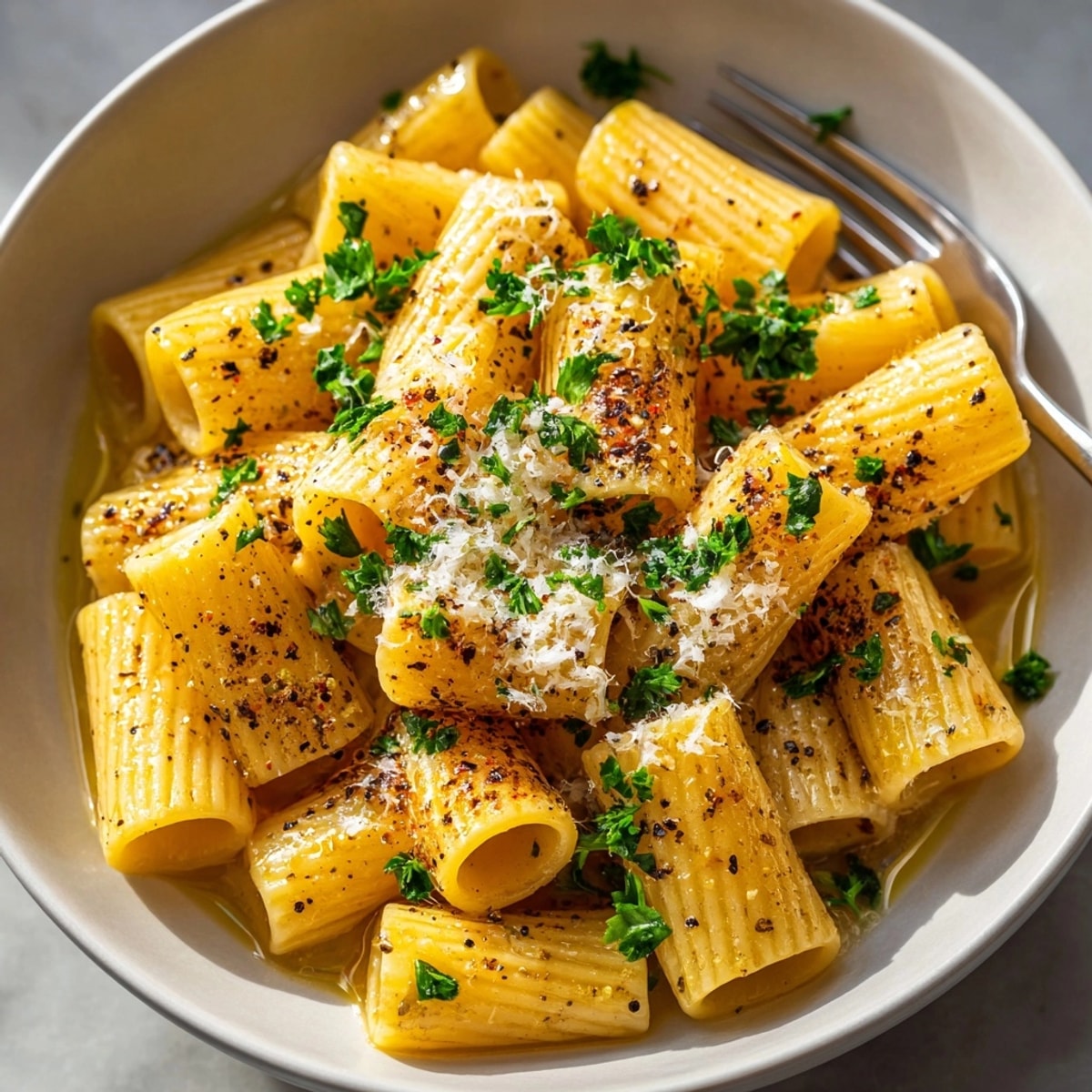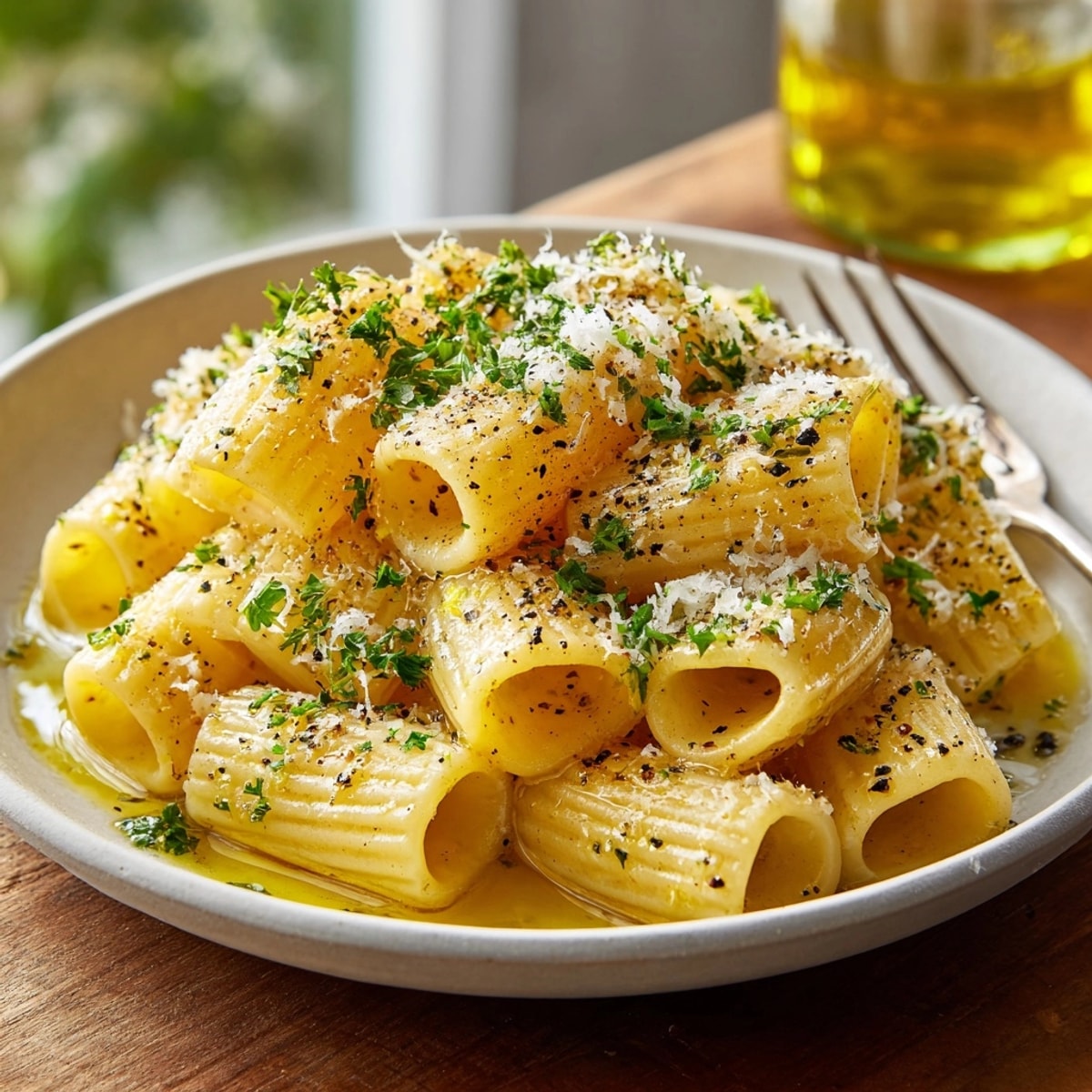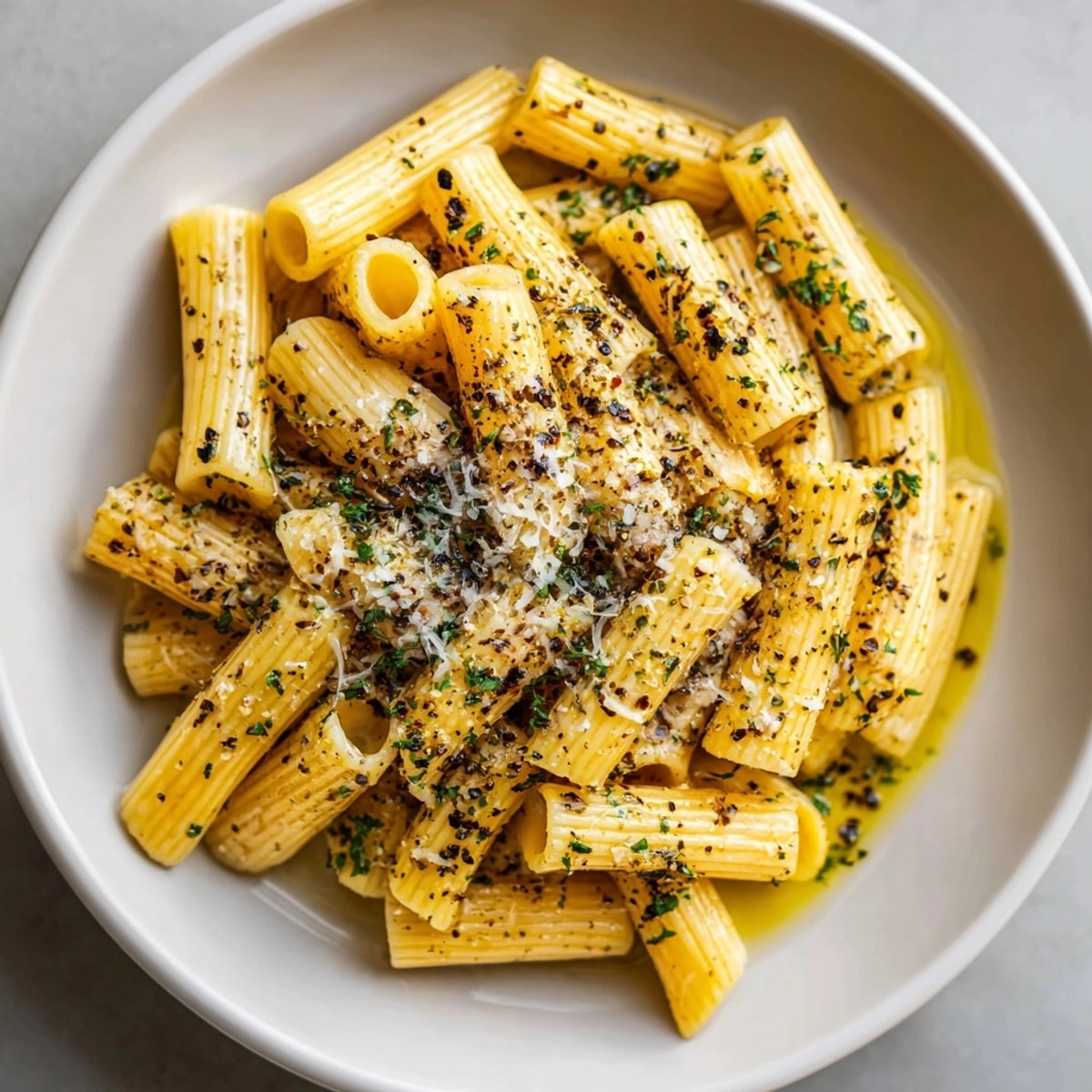 Save
Save This bone broth pasta has transformed my weeknight dinner routine, combining the nourishing benefits of homemade bone broth with satisfying pasta for a meal that's both comforting and nutritionally powerful.
I first created this recipe during a particularly cold winter when my family was fighting seasonal illnesses. The warming broth combined with hearty pasta became our recovery meal, and now it's requested even when everyone is perfectly healthy.
Ingredients
- Beef or chicken bones with connective tissue: these provide the collagen and deep flavor foundation. Look for joints, knuckles, or feet for maximum gelatin content
- Mirepoix vegetables: carrots, celery, onion creating the aromatic base that balances the richness of the broth
- Apple cider vinegar: helps extract minerals and collagen from the bones. Always use raw, unfiltered if possible
- Pasta shapes with ridges or hollows: these capture more of the rich broth. Choose bronze die extruded pasta for the best texture
- Fresh parsley and lemon juice: these brighten the final dish and cut through the richness with essential freshness
Instructions
- Roast the Bones:
- Place bones on a baking sheet and roast at 220°C until deeply browned, about 25 minutes. This caramelization creates depth in your broth that cannot be achieved any other way. Look for a rich mahogany color without burning.
- Create the Broth Base:
- Transfer roasted bones to a large stockpot with all vegetables and aromatics. Cover with cold water and add apple cider vinegar. The cold start helps extract maximum flavor and the vinegar pulls minerals from the bones. Bring to just barely a simmer, never a rolling boil.
- Patient Simmering:
- Maintain the gentlest possible simmer for at least 2 hours, ideally 4. Skim occasionally to remove any foam. The longer you simmer, the more collagen extracts from the bones, creating that silky mouthfeel. The broth should reduce slightly and become more intense.
- Strain and Season:
- Pour the finished broth through a fine mesh sieve, pressing gently on solids to extract all liquid. Return to a clean pot and season with sea salt to taste. The broth should taste slightly stronger than you'd like as it will mellow when combined with pasta.
- Cook Pasta Separately:
- Boil pasta in well salted water until just shy of al dente. Reserve some starchy pasta water before draining. This separate cooking ensures perfect pasta texture while allowing the bone broth to remain clear and pure.
- Marry the Components:
- Add drained pasta to simmering broth and cook for 2 more minutes, allowing pasta to absorb the rich flavors and collagen. The pasta will continue cooking and drinking in the broth, becoming one with it rather than simply sitting in it.
- Finish with Brightness:
- Stir in olive oil, lemon juice, and fresh parsley just before serving. Taste and adjust seasoning. These final touches balance the richness and add dimension to the deeply savory dish.
 Save
Save The apple cider vinegar is my secret weapon in this recipe. While nearly imperceptible in the final dish, it works quietly behind the scenes to help break down the connective tissues in the bones, releasing more minerals and collagen into your broth. I discovered this technique from my grandmother who always kept a bottle by her stockpot.
Bone Selection Guide
Choosing the right bones dramatically impacts your broth quality. For beef broth, seek out knuckle bones, marrow bones, and oxtail for maximum collagen content. For chicken, save carcasses from roast chickens and ask your butcher for extra backs, necks, and feet. The feet especially contribute exceptional amounts of gelatin. Always look for bones from pasture raised animals when possible, as they contain higher nutrient profiles. A mix of bone types creates the most balanced flavor and nutritional profile.
Make Ahead and Storage
This bone broth pasta transforms beautifully into a make ahead meal. The broth itself can be prepared up to 5 days ahead and stored in the refrigerator, where it will develop even deeper flavor. For longer storage, freeze the strained broth in portions for up to 3 months. When properly chilled, a good bone broth will develop a gelatin layer on top, indicating successful collagen extraction. When ready to serve, simply reheat the broth, cook fresh pasta, and combine as directed. The completed dish keeps well refrigerated for 2 days, though the pasta will continue absorbing broth and soften somewhat.
Seasonal Adaptations
- Spring Version Add fresh peas, asparagus tips, and lemon zest during the final minutes of cooking
- Summer Variation Incorporate cherry tomatoes, fresh basil, and a splash of white wine
- Fall Rendition Include roasted butternut squash cubes and sage leaves fried in butter
Serving Suggestions
This bone broth pasta works beautifully as a standalone meal, but truly shines when served with complementary sides. Pair with a bitter greens salad dressed simply with olive oil and lemon to cut through the richness of the broth. A slice of crusty sourdough bread for dipping captures any remaining broth in your bowl. For special occasions, begin the meal with a small portion of this pasta as a primo piatto before a simple protein main course. The umami richness pairs exceptionally well with bright, acidic white wines like Vermentino or Pinot Grigio that can stand up to the intensity of the broth while refreshing the palate.
 Save
Save This bone broth pasta is a deeply satisfying and wholesome meal. Its versatility allows for creative adaptations throughout the year, making it a staple for any kitchen.
Recipe FAQ
- → How can I deepen the broth’s flavor?
Roast bones before simmering, let the broth cook for several hours, and consider adding a small piece of kombu for extra depth.
- → Can I use store-bought bone broth?
Yes, high-quality store-bought bone broth works well for convenience—use about 1.5 liters for optimal results.
- → Which pasta shapes complement this dish?
Short shapes like rigatoni, penne, or fusilli hold the broth beautifully and absorb maximum flavor.
- → How do I keep the dish dairy-free?
Simply omit the optional grated cheese or substitute with a dairy-free topping of your choice.
- → What variations can enhance the meal?
Add sautéed mushrooms, spinach, or shredded chicken to increase protein and bring additional nutrition.
- → What wine pairs well with this?
A crisp white wine such as Pinot Grigio complements the rich, savory notes and keeps the meal balanced.